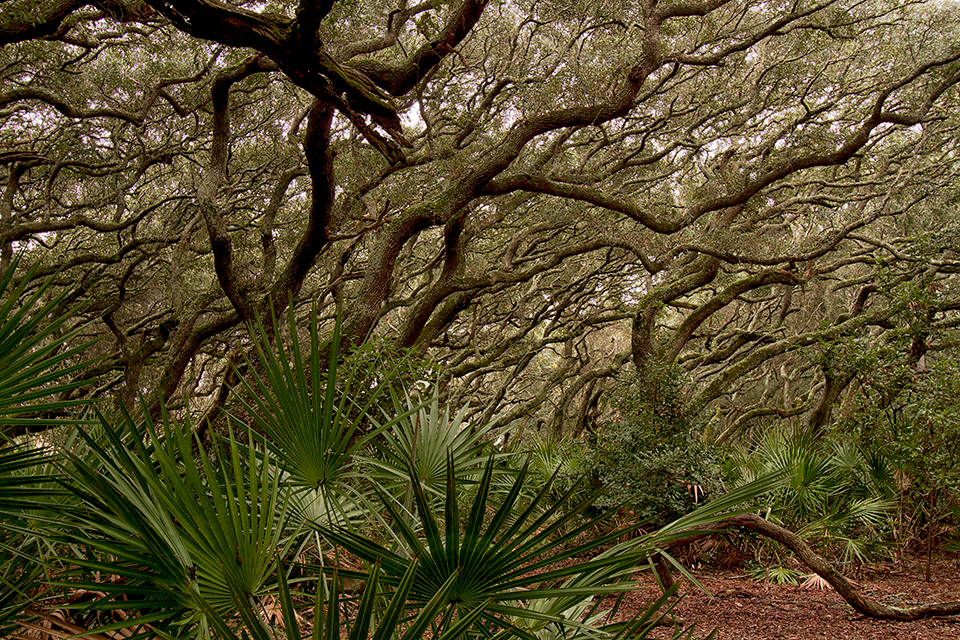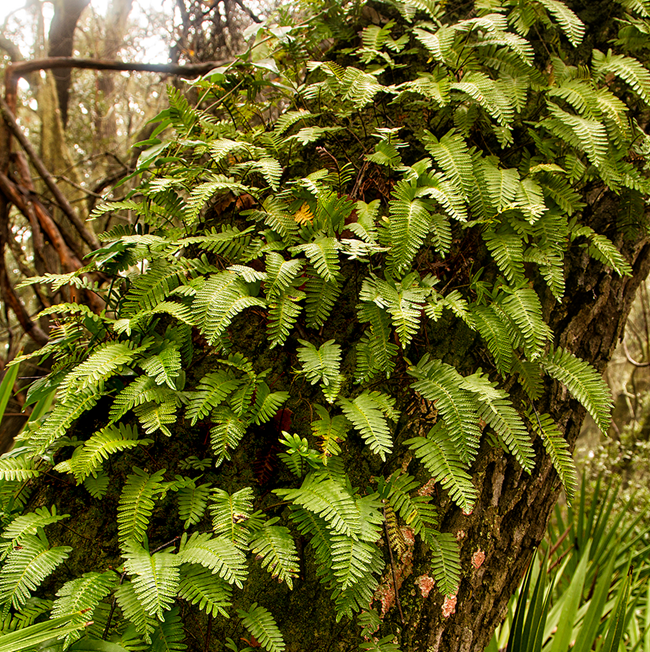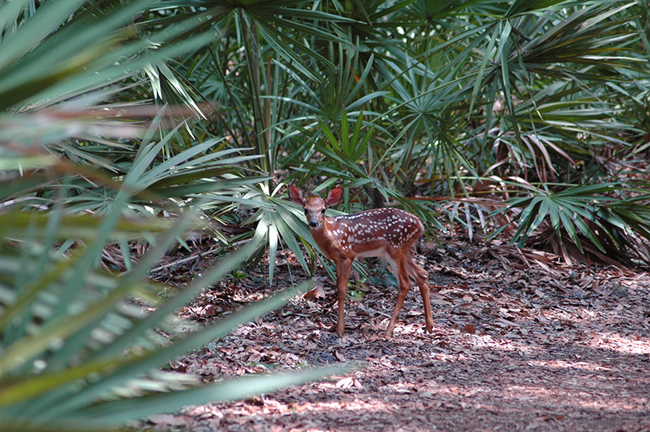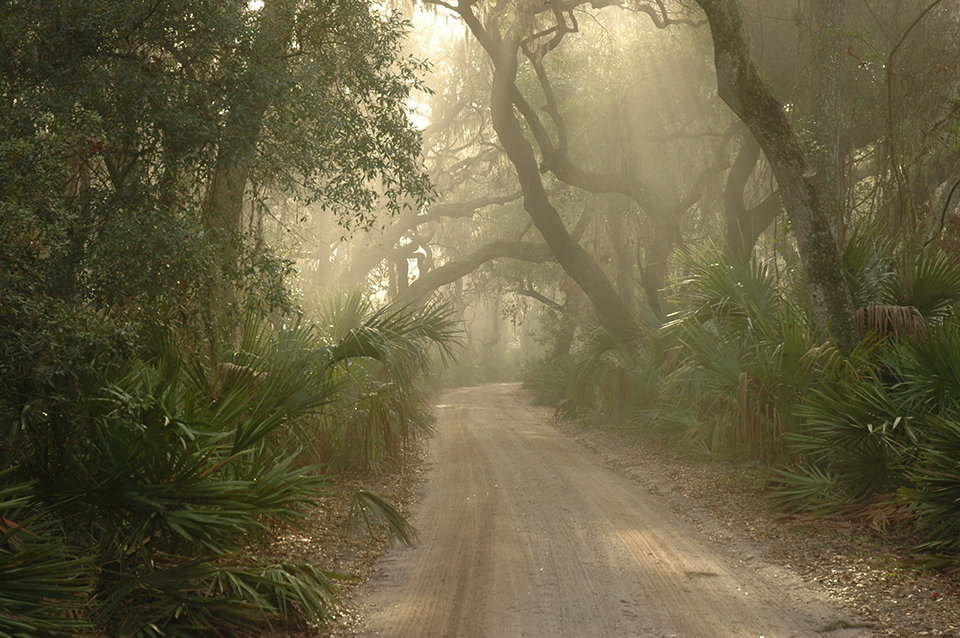
NPS Photo/Teodorski Forests have three different levels: the canopy, the understory, and the ground floor. Each level is home to different plants and animals that are adapted to survive there. In a maritime forest, plants have to adapt to constant exposure to salty conditions. 
NPS Photo/Teodorski The canopy is the highest section of the forest and in the maritime forest, the live oak is the dominant species of tree. Their branches are often covered with Spanish moss, resurrection ferns, and different types of fungus. The canopy section of forest gets the most sunlight, but it also gets the most exposure to salty air. As a result, growth of the trees is stunted, causing branches to grow outward rather than upward, creating a dense canopy. This process is called salt-pruning, and it gives Cumberland Island’s live oaks a unique look that visitors come to know and love, as their twisted branches sprawl throughout campgrounds, trails, and even the main road. Insects, squirrels, and various migratory birds find habitat in the live oak canopy. If you pause while standing beneath the canopy of the maritime forest, you will see it come to life, with birds flitting from branch to branch, and squirrels running up and down trees. 
NPS Photo The canopy connects to the next section of forest, the understory, by vines such as grape, poison ivy, crossvine, and Virginia Creeper. The understory doesn’t receive much sunlight because of the dense canopy, so more shade-tolerant plant species are found here. Some of the most common shade-tolerant species are sparkleberry, hollies, and saw palmetto. These plants create an abundant source of food for animals like white-tailed deer and birds. The understory can grow to be extremely dense, which provides impeccable camouflage for these same animals. One might see a white-tailed deer walking along the main road only to see it quickly dash into thick understory not to be seen again.
The Groundfloor The last section of the forest is certainly not least. The ground floor of the maritime forest supports both the canopy and the understory by providing a place of support and by recycling forest nutrients. Limbs and other dead wood are decomposed by insects and wood borers. Mold and bacteria break down leaves and dead animals. Armadillos keep the soil overturned with their search for insects, allowing decomposers to work more efficiently. The nutrients are then returned to the soil and utilized by the plants, perpetuating the nutrient cycle, though the sandy soil of the maritime forest does not hold nutrients well. Water leaches nutrients from the well-drained soil. The shallow layer of nutrients leads to many plants having shallow, spreading root systems.
The Worth of the Forest The maritime forest has been important for different groups of people on the island throughout time for the value placed on its live oak timber. The timber was useful for building naval ships because the natural twists and turns in the branches made them perfect for the angles needed in ship building. By 1802, an estimated 80% of live oaks on the island had been harvested. Today, the maritime forest holds a different value. Visitors marvel at the beauty of the oak canopy and its gnarled branches draped with Spanish moss. A forest that is centuries in the making, future generations will determine its worth for themselves. 
NPS Photo |
Last updated: December 14, 2018
